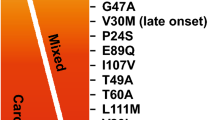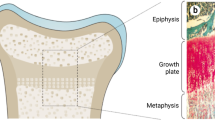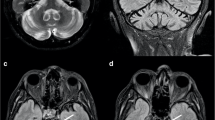Abstract
Pituicytoma is a rare low-grade (WHO grade I) sellar region glioma. Among sellar tumors, pituitary adenomas, mainly prolactinomas, may show amyloid deposits. Gelsolin is a ubiquitous calcium-dependent protein that regulates actin filament dynamics. Two known gene point mutations result in gelsolin amyloid deposition, a characteristic feature of a rare type of familial amyloid polyneuropathy (FAP), the Finnish-type FAP, or hereditary gelsolin amyloidosis (HGA). HGA is an autosomal-dominant systemic amyloidosis, characterized by slowly progressive neurological deterioration with corneal lattice dystrophy, cranial neuropathy, and cutis laxa. A unique case of pituicytoma with marked gelsolin amyloid deposition in a 67-year-old Chinese woman is described. MRI revealed a 2.6-cm well-circumscribed, uniformly contrast-enhancing solid sellar mass with suprasellar extension. Histologically, the lesion was characterized by solid sheets and fascicles of spindle cells with slightly fibrillary cytoplasm and oval nuclei with pinpoint nucleoli. Surrounding brain parenchyma showed marked reactive piloid gliosis. Remarkably, conspicuous amyloid deposits were identified as pink homogeneous spherules on light microscopy that showed apple-green birefringence on Congo red with polarization. Mass spectrometric-based proteomic analysis identified the amyloid as gelsolin type. Immunohistochemically, diffuse reactivity to S100 protein and TTF1, focal reactivity for GFAP, and no reactivity to EMA, synaptophysin, and chromogranin were observed. HGA-related mutations were not identified in the tumor. No recurrence was noted 14 months after surgery. To the knowledge of the authors, amyloid deposition in pituicytoma or tumor-associated gelsolin amyloidosis has not been previously described. This novel finding expands the spectrum of sellar tumors that may be associated with amyloid deposition.



Similar content being viewed by others
References
Louis DN, Ohgaki H, Wiestler OD, Cavenee WK (eds) (2007) WHO Classification of Tumours of the Central Nervous System. IARC, Lyon
Brat DJ, Scheithauer BW, Staugaitis SM, Holtzman RN, Morgello S, Burger PC (2000) Pituicytoma: a distinctive low-grade glioma of the neurohypophysis. Am J Surg Pathol 24 (3):362–368
Pirayesh Islamian A, Buslei R, Saeger W, Fahlbusch R (2012) Pituicytoma: overview of treatment strategies and outcome. Pituitary 15 (2):227–236. doi:10.1007/s11102-011-0317-0
Hatton GI (1988) Pituicytes, glia and control of terminal secretion. J Exp Biol 139:67–79
Scheithauer BW, Horvath E, Kovacs K (1992) Ultrastructure of the neurohypophysis. Microsc Res Tech 20 (2):177–186. doi:10.1002/jemt.1070200206
Cenacchi G, Giovenali P, Castrioto C, Giangaspero F (2001) Pituicytoma: ultrastructural evidence of a possible origin from folliculo-stellate cells of the adenohypophysis. Ultrastruct Pathol 25 (4):309–312
Inoue K, Mogi C, Ogawa S, Tomida M, Miyai S (2002) Are folliculo-stellate cells in the anterior pituitary gland supportive cells or organ-specific stem cells? Arch Physiol Biochem 110 (1–2):50–53. doi:10.1076/apab.110.1.50.911
Ulm AJ, Yachnis AT, Brat DJ, Rhoton AL, Jr. (2004) Pituicytoma: report of two cases and clues regarding histogenesis. Neurosurgery 54 (3):753–757; discussion 757–758
Ellis JA, Tsankova NM, D'Amico R, Ausiello JC, Canoll P, Rosenblum MK, Bruce JN (2012) Epithelioid pituicytoma. World Neurosurg 78 (1–2):E191-197. doi:10.1016/j.wneu.2011.09.011
Secci F, Merciadri P, Rossi DC, D'Andrea A, Zona G (2012) Pituicytomas: radiological findings, clinical behavior and surgical management. Acta Neurochir (Wien) 154 (4):649–657; discussion 657. doi:10.1007/s00701-011-1235-7
Covington MF, Chin SS, Osborn AG (2011) Pituicytoma, spindle cell oncocytoma, and granular cell tumor: clarification and meta-analysis of the world literature since 1893. AJNR Am J Neuroradiol 32 (11):2067–2072. doi:10.3174/ajnr.A2717
Schultz AB, Brat DJ, Oyesiku NM, Hunter SB (2001) Intrasellar pituicytoma in a patient with other endocrine neoplasms. Arch Pathol Lab Med 125 (4):527–530. doi:10.1043/0003-9985(2001)125<0527:IPIAPW>2.0.CO;2
Hammoud DA, Munter FM, Brat DJ, Pomper MG (2010) Magnetic resonance imaging features of pituicytomas: analysis of 10 cases. J Comput Assist Tomogr 34 (5):757–761. doi:10.1097/RCT.0b013e3181e289c0
Benvenga S, Cannavo S, Trimarchi F (2004) Prolactin is an amyloid-related protein. J Endocrinol Invest 27 (2):209–210
Maji SK, Perrin MH, Sawaya MR, Jessberger S, Vadodaria K, Rissman RA, Singru PS, Nilsson KP, Simon R, Schubert D, Eisenberg D, Rivier J, Sawchenko P, Vale W, Riek R (2009) Functional amyloids as natural storage of peptide hormones in pituitary secretory granules. Science 325 (5938):328–332. doi:10.1126/science.1173155
Benvenga S, Cannavo S, Trimarchi F, Guarneri F (2009) Confirmation of local amino acid sequence homology between human prolactin and the amyloid-related proteins. Pituitary 12 (4):368–370. doi:10.1007/s11102-008-0152-0
Hinton DR, Polk RK, Linse KD, Weiss MH, Kovacs K, Garner JA (1997) Characterization of spherical amyloid protein from a prolactin-producing pituitary adenoma. Acta Neuropathol 93 (1):43–49
Mori H, Mori S, Saitoh Y, Moriwaki K, Iida S, Matsumoto K (1985) Growth hormone-producing pituitary adenoma with crystal-like amyloid immunohistochemically positive for growth hormone. Cancer 55 (1):96–102
Saitoh Y, Mori H, Matsumoto K, Ushio Y, Hayakawa T, Mori S, Arita N, Mogami H (1985) Accumulation of amyloid in pituitary adenomas. Acta Neuropathol 68 (2):87–92
Landolt AM, Kleihues P, Heitz PU (1987) Amyloid deposits in pituitary adenomas. Differentiation of two types. Arch Pathol Lab Med 111 (5):453–458
Osamura RY, Watanabe K, Komatsu N, Ohya M, Kageyama N (1982) Amorphous and stellate amyloid in functioning human pituitary adenomas: histochemical, immunohistochemical and electron microscopic studies. Acta Pathol Jpn 32 (4):605–611
Rocken C, Uhlig H, Saeger W, Linke RP, Fehr S (1995) Amyloid Deposits in Pituitaries and Pituitary Adenomas: Immunohistochemistry and In Situ Hybridization. Endocr Pathol 6 (2):135–143
Vouyiouklis DA, Brophy PJ (1997) A novel gelsolin isoform expressed by oligodendrocytes in the central nervous system. J Neurochem 69 (3):995–1005
de la Chapelle A, Tolvanen R, Boysen G, Santavy J, Bleeker-Wagemakers L, Maury CP, Kere J (1992) Gelsolin-derived familial amyloidosis caused by asparagine or tyrosine substitution for aspartic acid at residue 187. Nat Genet 2 (2):157–160. doi:10.1038/ng1092-157
Maury CP, Kere J, Tolvanen R, de la Chapelle A (1990) Finnish hereditary amyloidosis is caused by a single nucleotide substitution in the gelsolin gene. FEBS Lett 276 (1–2):75–77
Pihlamaa T, Rautio J, Kiuru-Enari S, Suominen S (2011) Gelsolin amyloidosis as a cause of early aging and progressive bilateral facial paralysis. Plast Reconstr Surg 127 (6):2342–2351. doi:10.1097/PRS.0b013e318213a0a2
Kiuru S (1998) Gelsolin-related familial amyloidosis, Finnish type (FAF), and its variants found worldwide. Amyloid 5 (1):55–66
Chen CD, Huff ME, Matteson J, Page L, Phillips R, Kelly JW, Balch WE (2001) Furin initiates gelsolin familial amyloidosis in the Golgi through a defect in Ca(2+) stabilization. Embo J 20 (22):6277–6287. doi:10.1093/emboj/20.22.6277
Paunio T, Kangas H, Kalkkinen N, Haltia M, Palo J, Peltonen L (1994) Toward understanding the pathogenic mechanisms in gelsolin-related amyloidosis: in vitro expression reveals an abnormal gelsolin fragment. Hum Mol Genet 3 (12):2223–2229
Page LJ, Suk JY, Huff ME, Lim HJ, Venable J, Yates J, Kelly JW, Balch WE (2005) Metalloendoprotease cleavage triggers gelsolin amyloidogenesis. Embo J 24 (23):4124–4132. doi:10.1038/sj.emboj.7600872
Solomon JP, Page LJ, Balch WE, Kelly JW (2012) Gelsolin amyloidosis: genetics, biochemistry, pathology and possible strategies for therapeutic intervention. Crit Rev Biochem Mol Biol 47 (3):282–296. doi:10.3109/10409238.2012.661401
Haltia M, Ghiso J, Prelli F, Gallo G, Kiuru S, Somer H, Palo J, Frangione B (1990) Amyloid in familial amyloidosis, Finnish type, is antigenically and structurally related to gelsolin. Am J Pathol 136 (6):1223–1228
Klein CJ, Vrana JA, Theis JD, Dyck PJ, Spinner RJ, Mauermann ML, Bergen HR, 3rd, Zeldenrust SR, Dogan A (2011) Mass spectrometric-based proteomic analysis of amyloid neuropathy type in nerve tissue. Arch Neurol 68 (2):195–199. doi:10.1001/archneurol.2010.261
Soto C, Castano EM, Prelli F, Kumar RA, Baumann M (1995) Apolipoprotein E increases the fibrillogenic potential of synthetic peptides derived from Alzheimer's, gelsolin and AA amyloids. FEBS Lett 371 (2):110–114
Figarella-Branger D, Dufour H, Fernandez C, Bouvier-Labit C, Grisoli F, Pellissier JF (2002) Pituicytomas, a mis-diagnosed benign tumor of the neurohypophysis: report of three cases. Acta Neuropathol 104 (3):313–319. doi:10.1007/s00401-002-0557-1
Takei H, Goodman JC, Tanaka S, Bhattacharjee MB, Bahrami A, Powell SZ (2005) Pituicytoma incidentally found at autopsy. Pathol Int 55 (11):745–749. doi:10.1111/j.1440-1827.2005.01890.x
Lee EB, Tihan T, Scheithauer BW, Zhang PJ, Gonatas NK (2009) Thyroid transcription factor 1 expression in sellar tumors: a histogenetic marker? J Neuropathol Exp Neurol 68 (5):482–488. doi:10.1097/NEN.0b013e3181a13fca
Zhi L, Yang L, Quan H, Bai-ning L (2009) Pituicytoma presenting with atypical histological features. Pathology 41 (5):505–509
Zunarelli E, Casaretta GL, Rusev B, Lupi M (2011) Pituicytoma with atypical histological features: are they predictive of unfavourable clinical course? Pathology 43 (4):389–394. doi:10.1097/PAT.0b013e32834687b3
Rodriguez FJ, Scheithauer BW, Roncaroli F, Silva AI, Kovacs K, Brat DJ, Jin L (2008) Galectin-3 expression is ubiquitous in tumors of the sellar region, nervous system, and mimics: an immunohistochemical and RT-PCR study. Am J Surg Pathol 32 (9):1344–1352. doi:10.1097/PAS.0b013e3181694f41
Karamchandani J, Syro LV, Uribe H, Horvath E, Kovacs K (2012) Pituicytoma of the neurohypophysis: analysis of cell proliferation biomarkers. Can J Neurol Sci 39 (6):835–837
Phillips JJ, Misra A, Feuerstein BG, Kunwar S, Tihan T (2010) Pituicytoma: characterization of a unique neoplasm by histology, immunohistochemistry, ultrastructure, and array-based comparative genomic hybridization. Arch Pathol Lab Med 134 (7):1063–1069. doi:10.1043/2009-0167-CR.1
Roncaroli F, Scheithauer BW, Cenacchi G, Horvath E, Kovacs K, Lloyd RV, Abell-Aleff P, Santi M, Yates AJ (2002) ‘Spindle cell oncocytoma’ of the adenohypophysis: a tumor of folliculostellate cells? Am J Surg Pathol 26 (8):1048–1055
Rossi ML, Bevan JS, Esiri MM, Hughes JT, Adams CB (1987) Pituicytoma (pilocytic astrocytoma). Case report. J Neurosurg 67 (5):768–772. doi:10.3171/jns.1987.67.5.0768
Rodriguez FJ, Atkinson JL, Giannini C (2007) Massive sellar and parasellar schwannoma. Arch Neurol 64 (8):1198–1199. doi:10.1001/archneur.64.8.1198
Ogiwara H, Dubner S, Shafizadeh S, Raizer J, Chandler JP (2011) Spindle cell oncocytoma of the pituitary and pituicytoma: two tumors mimicking pituitary adenoma. Surg Neurol Int 2:116. doi:10.4103/2152-7806.83932
Gibbs WN, Monuki ES, Linskey ME, Hasso AN (2006) Pituicytoma: diagnostic features on selective carotid angiography and MR imaging. AJNR Am J Neuroradiol 27 (8):1639–1642
Wolfe SQ, Bruce J, Morcos JJ (2008) Pituicytoma: case report. Neurosurgery 63 (1):E173-174; discussion E174. doi:10.1227/01.NEU.0000335084.93093.C8
Vrana JA, Gamez JD, Madden BJ, Theis JD, Bergen HR, 3rd, Dogan A (2009) Classification of amyloidosis by laser microdissection and mass spectrometry-based proteomic analysis in clinical biopsy specimens. Blood 114 (24):4957–4959. doi:10.1182/blood-2009-07-230722
Meretoja J (1969) Familial systemic paramyloidosis with lattice dystrophy of the cornea, progressive cranial neuropathy, skin changes and various internal symptoms. A previously unrecognized heritable syndrome. Ann Clin Res 1 (4):314–324
Alonso G, Gabrion J, Travers E, Assenmacher I (1981) Ultrastructural organization of actin filaments in neurosecretory axons of the rat. Cell Tissue Res 214 (2):323–341
Benzonana G, Dreifuss JJ, Gabbiani G (1979) Actin is unevenly distributed in the pituitary gland. Cell Tissue Res 200 (1):123–133
Author information
Authors and Affiliations
Corresponding author
Additional information
Bernd W. Scheithauer passed away during the course of the study.
Rights and permissions
About this article
Cite this article
Ida, C.M., Yan, X., Jentoft, M.E. et al. Pituicytoma with Gelsolin Amyloid Deposition. Endocr Pathol 24, 149–155 (2013). https://doi.org/10.1007/s12022-013-9254-y
Published:
Issue Date:
DOI: https://doi.org/10.1007/s12022-013-9254-y




